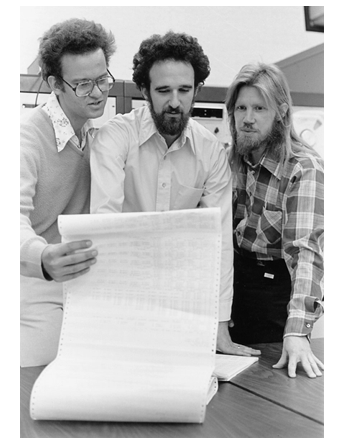1.1 Evolution of cryptography
Over the past four decades or so, cryptography has evolved from an exotic field known to a select few into a fundamental skill for the design and operation of modern IT systems. Today, nearly every modern product, from the bank card in your pocket to the server farm running your favorite cloud services, requires some form of cryptography to protect it and its users against cyberattacks. Consequently, it has found its way into mainstream computer science and software engineering.

Figure 1.1: Number of publications at IACR conferences on cryptology over the years
Cryptography and its counterpart cryptanalysis were basically unknown outside of military and intelligence services until the mid 1970s. According to [172], Cryptography is the practice and study of techniques for secure communication in the presence of adversaries; it deals with the development and application of cryptographic mechanisms. Cryptanalysis is the study of cryptographic mechanisms’ weaknesses, aimed at finding mathematical ways to render these mechanisms ineffective. Taken together, cryptography and cryptanalysis form what’s called cryptology.
In 1967, David Kahn, an American historian, journalist, and writer, published a book titled The Codebreakers – The Story of Secret Writing, which is considered to be the first extensive treatment and a comprehensive report of the history of cryptography and military intelligence from ancient Egypt to modern times [93]. Kahn’s book introduced cryptology to a broader audience. Its content was, however, necessarily restricted to symmetric cryptography. In symmetric cryptography, the sender and receiver of a message share a common secret key and use it for both encrypting and decrypting. The problem of how sender and receiver should exchange the secret in a secure way was considered out of scope.
This changed in 1976, when the seminal paper New Directions in Cryptography by Whitfield Diffie and Martin Hellman appeared in volume IT-22 of IEEE Transactions on Information Security [49]. In that publication, Diffie and Hellman described a novel method for securely agreeing on a secret key over a public channel based on the so-called discrete logarithm problem. Moreover, they suggested for the first time that the sender and receiver might use different keys for encrypting (the public key) and decrypting (the private key) and thereby invented the field of asymmetric cryptography.

Figure 1.2: From left to right: Ralph Merkle, Martin Hellman, Whitfield Diffie [69]
While there were scientific works on cryptography dating back to the early 1970s, the publication by Diffie and Hellman is the first publicly available paper in which the use of a private key and a corresponding public key is proposed. This paper is considered to be the start of cryptography in the public domain. In 2002, Diffie and Hellman suggested their algorithm should be called Diffie-Hellman-Merkle key exchange because of Ralph Merkle’s significant contribution to the invention of asymmetric cryptography [185].
In 1977, the three MIT mathematicians Ron Rivest, Adi Shamir, and Len Adleman took up the suggestion by Diffie and Hellman and published the first asymmetric encryption algorithm, the RSA algorithm [151], which is based on yet another well-known mathematical problem, the factoring problem for large integers.

Figure 1.3: From left to right: Adi Shamir, Ron Rivest, Len Adleman [152]
The invention of asymmetric cryptography did not make symmetric cryptography obsolete. On the contrary, both fields have complementary strengths and weaknesses and can be efficiently combined in what is today called hybrid cryptosystems. The Transport Layer Security (TLS) protocol is a very good example of a hybrid cryptosystem.
Today, cryptography is a well-known (albeit mostly little understood in depth) topic in the IT community and an integral part of software development. As an example, as of July 2022, the OpenSSL library repository on GitHub contains over 31,500 commits by 686 contributors. Cryptography is also an integral part of numerous computer science and information security curricula, and numerous universities all over the world offer degrees in information security.
Why did this happen, and which factors led to this development and popularized cryptography within a comparably short period of time? To a large extent, this paradigm shift is a result of three—arguably still ongoing—developments in information technology that radically changed the role of cryptography in the modern connected world:
- The advent of the internet and the ever increasing need to transfer large amounts of data over untrusted channels, which also fostered the development of TLS
- The introduction of connectivity into nearly every new product, from toothbrushes to automobiles
- The ever increasing complexity of IT systems, specifically increasing hardware and software complexity
We will now discuss each of these factors in turn.
